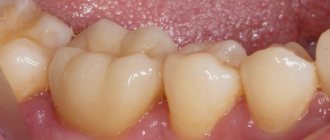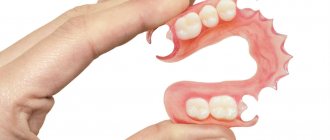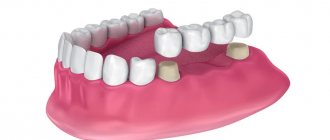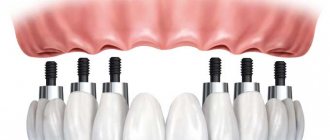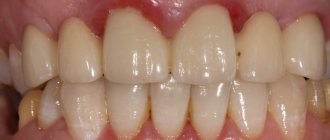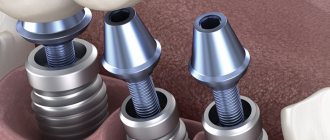How long does it take to treat caries?
A lot has been said and said about caries. But it is little known how the process of healing a tooth from this disease occurs. Let's quickly look at the main points - how long it takes to treat caries, how filling and further restoration of the tooth occurs. Caries is an infectious process
, which leads to tooth destruction and, if left untreated for a long time, inevitably leads to its removal.
There are 3 main stages of caries depending on the depth of the lesion: 1. Superficial - within the upper layers of enamel. 2. Middle - within the dentin (its upper and middle third). 3. Deep - the layer closest to the pulp, when damaged further, pulpitis occurs. Conventionally, depending on the localization and prevalence of the process, 5 classes according to Black are distinguished (in honor of the person who invented them) 1. Chewing surface 2. Chewing-contact surface. 3. On the contact surface of the front tooth, without involving the cutting edge in the process. 4. Class 3, but with the involvement of the cutting edge 5. Cervical surface of all teeth. Of course, all these lesions can be combined, so the classification is rather arbitrary, and the doctor during the treatment process makes a final verdict regarding the depth and extent of the spread of the process. So, the stages of treatment of deep caries in time.
1. Anesthesia, the effect of which occurs in approximately 4-10 minutes. 2. Mechanical treatment of the tooth with a brush and paste, or sandblasting to remove plaque (soft and hard). This stage takes 3-5 minutes 3. Determining the color of the future restoration - 2 minutes 4. Isolation of the working field using a rubber dam system - 3 minutes 5. How long does it take to drill and fill a tooth? - you ask. Yes, this stage of mechanical treatment (removal of carious tissue) is the most exciting and causes tremors in the body before the onset of anesthesia. It lasts about 10 minutes, and please note that at the moment it is absolutely painless. 6. Antiseptic treatment of the cavity with the addition of a product based on calcium hydroxide as a cushioning material to initiate the formation of a layer of dentin above the pulp and relieve inflammation in it. It occurs inevitably, since infection penetrates through the dentinal tubules even with minor caries, causing certain changes and reactions. 7. How long does it take to put a filling on a tooth? Placing a filling also consists of several sub-stages: 1) Etching the tooth surface with a special gel for better penetration of the adhesive system - 40 seconds. 2) Installation of the matrix and wedges (if necessary) in case of damage to tooth contacts - according to the timing of 1-2 minutes. 3) Applying a special adhesive (glue) for good fixation of the filling - 2 minutes. It needs to be thoroughly rubbed, inflated and illuminated with a special lamp. 4) Direct layer-by-layer application of material, illumination of each portion for 10 minutes or more, depending on the purpose and planned result. If we are talking about a buildup (restoring a tooth under a crown), where great anatomical accuracy is not required, then such a restoration will take less time. If this is a veneer on a front tooth, where aesthetics are at stake, then the work can last more than one hour. 5) Final grinding and polishing of the surface to give the restoration an ideal anatomical shape and a smooth texture indistinguishable from natural tissues. The stages of treatment for average caries, as well as any other, are approximately the same in time, with the exception of the stage of introducing therapeutic cushioning material. Let's answer the most frequently asked questions about timing: 1) How long does it take to fill a tooth? On average, this procedure lasts from 50 to 1.5 hours, depending on the complexity of the defect being restored. 2) How long does it take to fill the canals of a tooth? This process is called endodontic treatment and is carried out for complicated forms of caries. Time from 1.5 to 3 hours depending on complexity. Naturally, this time is divided into several visits. 3) How long does it take to fill a tooth if it has already been filled (that is, a “dead” tooth with a removed nerve). Again, planning of treatment and time for it will be based on how well and with what the canals were previously sealed, and whether there are any complaints at the time of treatment. The unfilling process can last from several hours, after which medicinal material is introduced into the tooth canals for several weeks. Therefore, the process from start to final recovery can last about a month. 4) How long does it take to fill a tooth if it already has a filling and it is of unsatisfactory quality (sagged, a part chipped, changed color)? In any case, the decision on the possibility of restoring a tooth with a filling in all of the above conditions will be made on the basis of an examination, an image and the degree of tooth decay. If the lesion is small, then the old filling is removed at the very beginning of treatment and replaced with a new restoration. Otherwise, restoration with an orthopedic construction - an inlay, a crown - is required. We talked about how long it takes to fill a tooth in different clinical situations, as well as the main stages of this procedure. Please note that the time indicated above is average and gives you only an approximate idea of the doctor’s work. For more detailed information and drawing up a rehabilitation plan, if you have oral diseases, please contact our Familystom clinic for a face-to-face consultation. We provide high-tech, qualified assistance and create an atmosphere of reliability and calm at all stages of treatment.
How is the treatment carried out?
The doctor uses special tools to drill a hole in the head of the unit being restored. Through it, it removes diseased pulp and dentin, and also disinfects the outlet space, and then seals it.
There are two main processing methods:
- apical-coronal, i.e. the doctor processes the dental canal from top to bottom, from the head to the mouth of the root;
- coronal-apical, i.e. on the contrary - from bottom to top.
The key to a high-quality procedure is accurate diagnosis of the roots, which is ensured by radiography. The picture is taken before, during and after the procedure. This is necessary in order to assess the length and shape of the dental outlet as accurately as possible. After all, these indicators are individual for each person.
During the procedure, antimicrobial agents are used that have the following effects:
- destroy harmful microflora;
- improve the condition of the preserved tissues of the unit;
- do not cause allergic reactions.
Our clinic actively uses laser technologies, which give excellent results.
They carefully remove dead remains of pulp and dentin without damaging living tissue.
Leave your phone number. The clinic administrator will call you back.
By leaving a request on the site, you consent to the processing of personal data
Make an appointment
Initial consultation
400 rubles
The image shows poorly treated root canals in the lower sixth unit.
BEFORE AFTER
BEFORE AFTER
Is it painful to remove a nerve from a tooth?
Modern dentistry has the widest possibilities and powerful universal anesthesia. Thanks to this, removal of the flock nerve is a painless procedure that is carried out during the visit. The only discomfort that the patient may feel concerns the injection into the gum. This can also be easily avoided by applying anesthesia, after which inserting a needle will not cause any discomfort.
Pain may occur in rare cases for one of the following reasons:
- Individual characteristics of the path of nerves, which is why standard techniques provide insufficient pain relief.
- Taking painkillers the day before by the patient, in particular from the group of non-steroidal anti-inflammatory drugs (NSAIDs), may reduce the effectiveness of anesthesia.
- The patient took alcohol before visiting the doctor.
- The patient belongs to the 2% of all people with immunity to anesthetics.
The solution to the problem in each case is the same - repeated anesthesia.
Installing a seal
The dentist selects a suitable filling material, which must meet the following requirements:
- have antimicrobial, hypoallergenic properties and high biocompatibility;
- be plastic and airtight at the same time;
- Do not dye the fabric of the unit being restored.
The filling material is varied:
- hardening;
- non-hardening;
- pins made of silver, titanium, gutta-percha, plastic.
When installing a pin, sealants and fillers are used, which are most often made from epoxy resin. First, the doctor uses an endodontic needle to place material into the prepared canal, then the top of the filling is compacted, excess material is removed, polished and adjusted to the bite.
Dental treatment at Dr. Granov’s dental clinic means high quality services and an individual approach to each patient.
What manipulations are performed when installing an implant?
The main steps when using the classical technique:
- Introduction of an anesthetic drug.
- Cutting the gums and peeling off the mucoperiosteal flap.
- Formation of the bone bed, with its gradual expansion until the desired size is achieved.
- Periodic irrigation of tissues to prevent overheating of the bone.
- Screwing a metal implant into the hole and installing a plug.
- Placement of mucoperiosteal flaps and suturing.
What happens if the implant does not take root?
Implant failure is difficult to prevent. The causes of the pathology may be peri-implantitis, smoking, non-compliance with medical recommendations in the early and late postoperative period. If acute rejection occurs, removal of the titanium rod is indicated. Re-implantation is possible only after complete healing of the wound. Rejection can develop several years after the permanent crown is installed. A number of external and internal factors can provoke a pathological process and destabilization of the implant.
There are several categories of causes of caries in humans.
The answer to the question of how to treat dental caries depends on the cause of such a disease. It is also very important to eliminate potential conditions for the development of tooth decay.
There are several reasons that can stimulate the appearance of damage to enamel and soft tissues:
- Severe bacterial plaque. It occurs when a person does not properly care for his teeth. It is very important to maintain regular oral hygiene, brush your teeth properly, and use floss.
- Tartar. It can also form if the patient does not comply with the rules of oral hygiene. If the stone is not removed in a timely manner, the lesion will constantly progress and spread.
- Poor nutrition. Risk factors include consuming large amounts of sweet and sour foods. Also on the list of dangerous foods are foods high in carbohydrates and starch. When consuming a large amount of low-quality and unhealthy food, tooth enamel gradually begins to become thinner. Because of this, under the influence of bacteria, the risk of caries becomes increasingly noticeable.
- Decreased saliva production. Under normal conditions, a person produces up to two liters of saliva per day. It is necessary so that food debris can be washed off the surface of the tooth. When the salivary glands do not function properly, these residues remain and the risk of bacterial growth increases.
- Lack of minerals in food. The human body either does not produce many useful substances that are needed to strengthen bones and tooth enamel, or receives them in small quantities. The list of main substances that must be obtained from foods includes fluorine, calcium, and phosphorus. At the same time, genetics also leads to problems for some people. Some people are simply genetically predisposed to accumulate a minimum of nutrients.
- Pregnancy. At different stages, there is a possibility that the fetus takes a lot of useful substances from the mother. She begins to experience a severe lack of minerals.
- Diseases of the body. Patients with systemic pathologies that directly affect metabolic processes are also at risk. Particularly dangerous are variants of diseases such as lesions of the thyroid gland, peptic ulcers, diabetes mellitus, gastritis, and imbalance of hormones in the body.
Another factor in the development of caries is the poor environmental situation in a person’s place of residence. It can stimulate the development of caries, rapid damage to both hard and soft tissues.
For this reason, a high incidence of caries is observed in regions where there are a lot of acids, heavy metal salts, and alkali vapors scattered in the air.
In order to develop a treatment method in a certain situation, it is necessary to understand what reason for the development of the disease is relevant in the case of a particular patient.
The fact is that often it is chronic diseases, improper oral hygiene, and lack of nutrients that can trigger the recurrence of the disease. In any situation, it is very important to eliminate the cause itself.
Who chooses to have all their teeth treated “in their sleep”
For everyone who values their time and is accustomed to a certain quality of life, i.e. for everyone, although 10 years ago this format was of interest only to “big screen” stars and patients from other cities
- Super-busy Muscovites If you don’t have time to go to the dentist, like going to work, in traffic jams, in the evening, 2 times a week for six months to a year to get your teeth in order, and the problem is put off and put off for years
- Patients not from Moscow Every month we accept at least 10 patients from Russia and Europe. The operations are planned remotely; you only need to come for diagnostics and the operation itself. Very comfortably!
- Public people of all professions Privacy, quick results and the absence of visible signs of treatment on the face are why this technique has long been loved by show business stars, politicians, businessmen, and more recently bloggers
- Connoisseurs of comfort You can treat your teeth in the format of a SPA procedure. Fall asleep and wake up when it's all over. Not seeing or remembering the process. Do not hear medical odors and unpleasant sounds. Get the result and go home!
- Parents of responsible children If your parents are also the type who wouldn’t let a dentist near them at the drop of a hat, but walk around without teeth, then the only treatment format they can agree to is “all in 1 visit.” Checked!
- All those who do not like dentists Uncontrollable feelings of fear, panic reactions, negative experiences with a dentist in the past - all this is a direct indication for treatment in medicinal sleep
How long can you walk with a temporary filling?
The material used for temporary filling is highly durable. The filling does not break down for a long time. The specialist determines the period of wearing temporary filling material based on the nature and degree of neglect of the disease. The duration of wearing the filling is individual for each patient.
At the end of the established period, the person must immediately contact a specialist. An increase in the time period can lead to the development of diseases. In some cases, the filling may crumble at the end of its period, and the drug will negatively affect the patient’s body.
Why is temporary filling needed?
The need to use filling material is determined by the dentist. The installation of a temporary filling is prescribed by a doctor in the following cases:
- Carrying out diagnostics. When treating a patient with deep caries, a specialist is not always able to determine the extent of tissue damage. The doctor cleans the tooth cavity and places filling material. If the neurovascular bundle is not inflamed, then after the procedure the person will not experience pain. If the dental nerve and surrounding tissues are damaged, preliminary treatment will be required.
- Removal of the neurovascular bundle. In some cases, nerve sacrifice is required before removal. To do this, the dentist puts a specialized paste into the tooth cavity. After a certain period of time, the specialist removes the pulp and fills the tooth cavity with permanent filling material.
- Dental prosthetics. The dentist prepares teeth for prosthetics. To ensure that the root canals are protected from food and pathogenic bacteria during manufacturing, the specialist places a temporary filling material into the tooth cavity.
- Treatment of diseases. After treatment, the dentist places medications into the tooth cavity. After a certain period of time, the specialist removes the temporary filling and installs a permanent filling.
